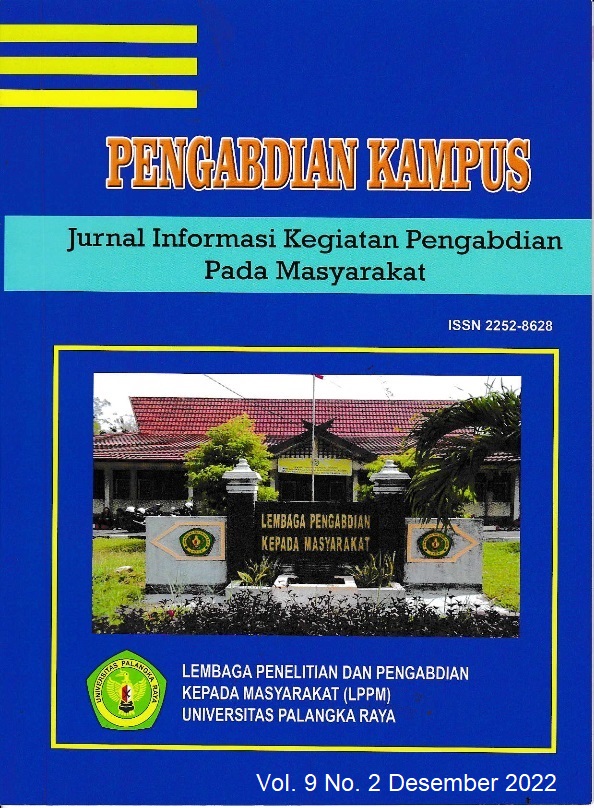Pelatihan Pengembangan Model Pembelajaran Bahasa Berbasis Genre dan Clil Bermuatan Wacana Artefak Bagi Guru Kelas di SDN-2 Panarung, Palangka Raya
DOI:
https://doi.org/10.52850/jpmupr.v9i2.7031Keywords:
artifact discourse, CLIL, language learning, primary school, text-based genreAbstract
The Community Empowerment Program (PPM) is one of the schemes in community service activities at the Faculty of Teacher Training and Education, University of Palangka Raya (FKIP UPR). This PPM activity was carried out by the Lecturer Team from FKIP UPR by giving training and mentoring to six-classroom teachers of primary school at SDN-2 Panarung, Kota Palangka Raya to develop a language learning model based on text and CLIL genres containing artifact discourse in Indonesian language learning in the primary school level. From the result of the evaluation given to the knowledge and skill of teachers before being given training in the PPM activity, they only obtained an average score of 65. Furthermore, after being given training and assistance in the PPM activity, the teachers’ score increased to an average of 85.7. Thus, the results of this PPM activity can improve the knowledge and skill of classroom teachers at SDN-2 Panarung to develop the text genre- and CLIL-based language learning model containing artifact discourse in Indonesian language learning in the primary school level
Downloads
Downloads
Published
How to Cite
Issue
Section
License
Copyright (c) 2022 Dina Mardiana, Sapriline, Simpun

This work is licensed under a Creative Commons Attribution 4.0 International License.










